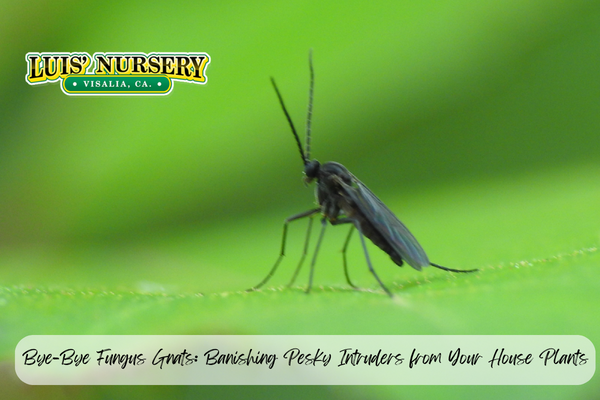Fungus gnats, those tiny flying insects hovering around your beloved house plants, can be quite annoying. To make matters worse they can also damage the roots of your plants. We’ve got you covered with effective methods to bid farewell to these pesky intruders, and get back to enjoying those precious plant babies.
Step 1: Identify the Culprits:
The first step is to confirm that the flying insects are indeed fungus gnats. These small, black or dark-colored insects are often found hovering around the soil and can sometimes be mistaken for fruit flies. Look for their larvae in the soil, which appear as tiny, white, worm-like creatures. Once you’ve confirmed their presence, it’s time to act!
Step 2: Dry Out the Soil:
Fungus gnats thrive in moist environments, so one effective way to combat them is by drying out the soil. Allow the top layer of soil to dry completely between waterings, as this will disrupt the gnats’ breeding cycle and prevent their larvae from surviving. Be cautious not to overwater your plants, as this can promote the growth of fungus and attract more gnats.
Step 3: Sticky Traps:
To catch adult fungus gnats and prevent them from laying eggs, place yellow sticky traps near your plants. These traps are coated with a sticky substance that attracts and traps the flying insects. Hang the traps close to the affected plants, ensuring they are at the same height as the foliage. The gnats will be drawn to the bright yellow color and become stuck on the traps, reducing their population.
Step 4: Soil Drench:
To eliminate the gnat larvae residing in the soil, use a soil drench made from organic insecticidal soap or neem oil. Mix the solution according to the package instructions and thoroughly water your plants with it. The soap or oil will suffocate the larvae, preventing them from maturing into adult gnats. Repeat this process every 7 to 10 days until the infestation is under control.
Step 5: Improve Air Circulation:
Fungus gnats thrive in stagnant air, so improving air circulation around your plants can be a deterrent. Place a small fan near your indoor garden to create a gentle breeze. This will make it difficult for the gnats to fly and disrupt their mating patterns. Additionally, the increased airflow will help the soil dry out faster, further inhibiting the gnats’ ability to reproduce.
Step 6: Avoid Overcrowding:
We know it’s hard.. you want ALLLLL the plants, but overcrowded plants can create a humid and moist environment, making them more susceptible to fungus gnat infestations. Ensure proper spacing between your house plants, allowing for adequate airflow and preventing the spread of moisture. If necessary, consider repotting or dividing larger plants to maintain a healthier environment and reduce the risk of infestation.
With some patience and a few steps, you can bid farewell to fungus gnats. Your indoor garden will be free from the annoyance of fungus gnats, allowing your plants to thrive and flourish. Ahem… this means you can get more plants! Come on by the nursery and check out our inventory.



